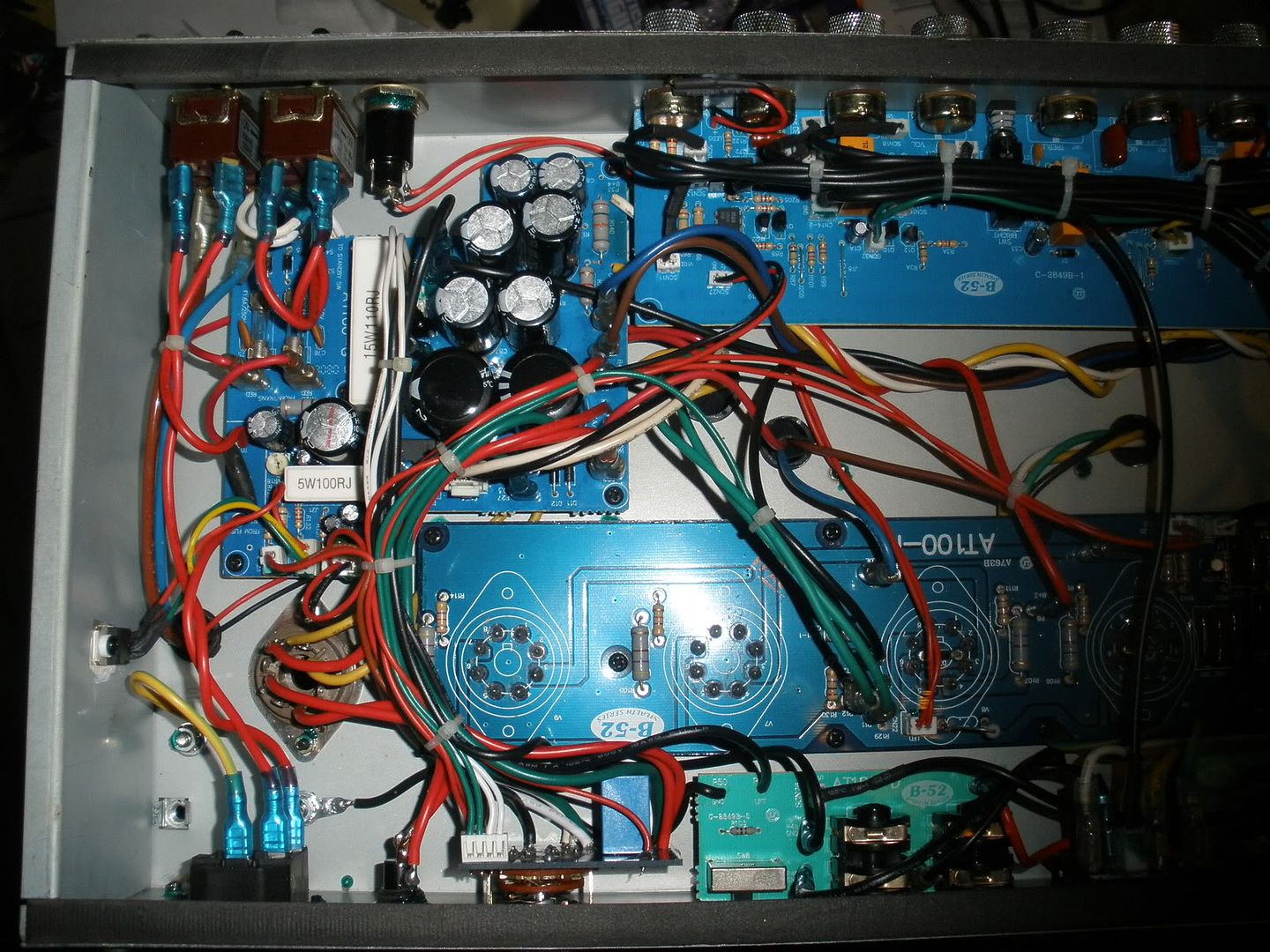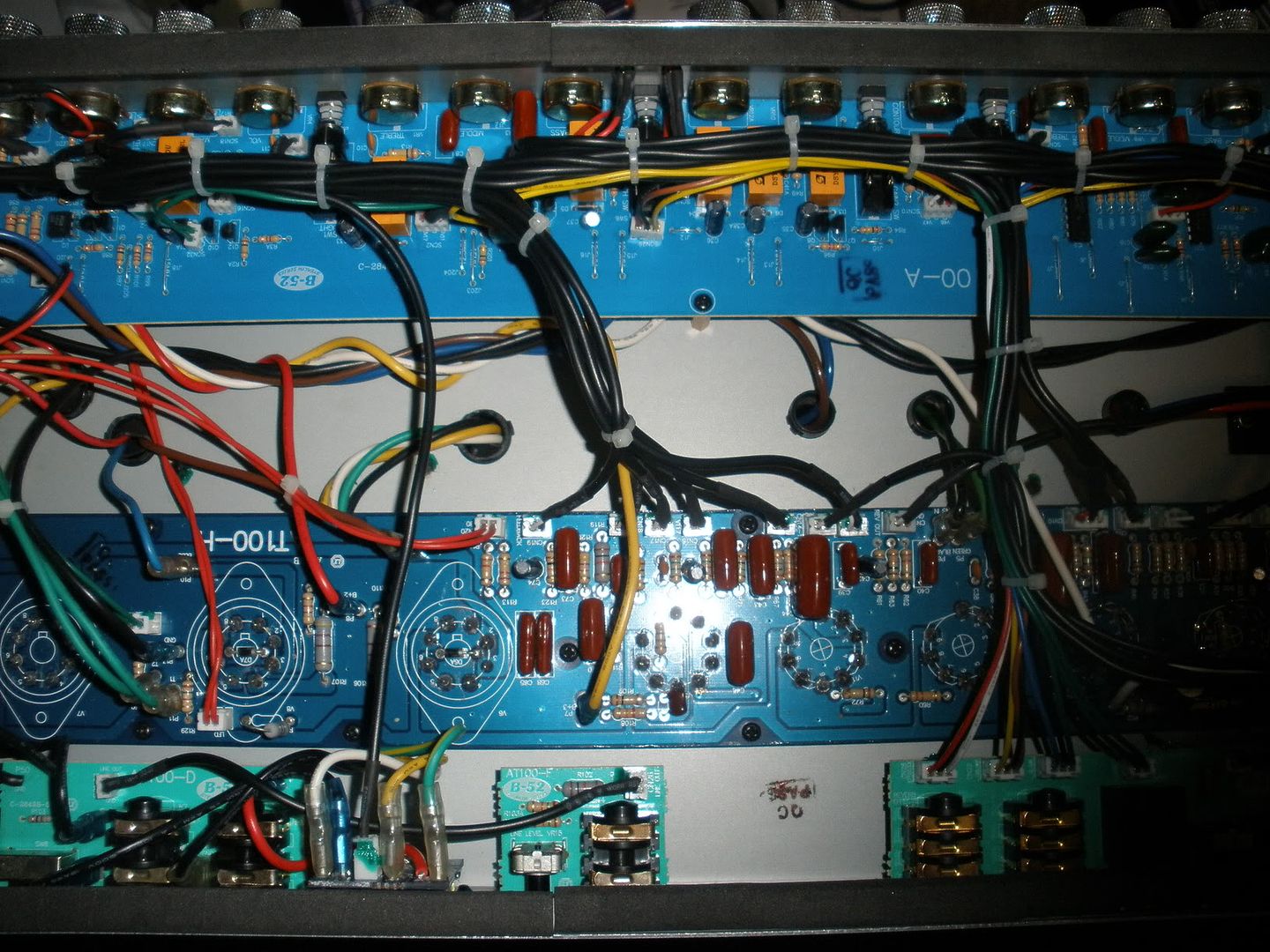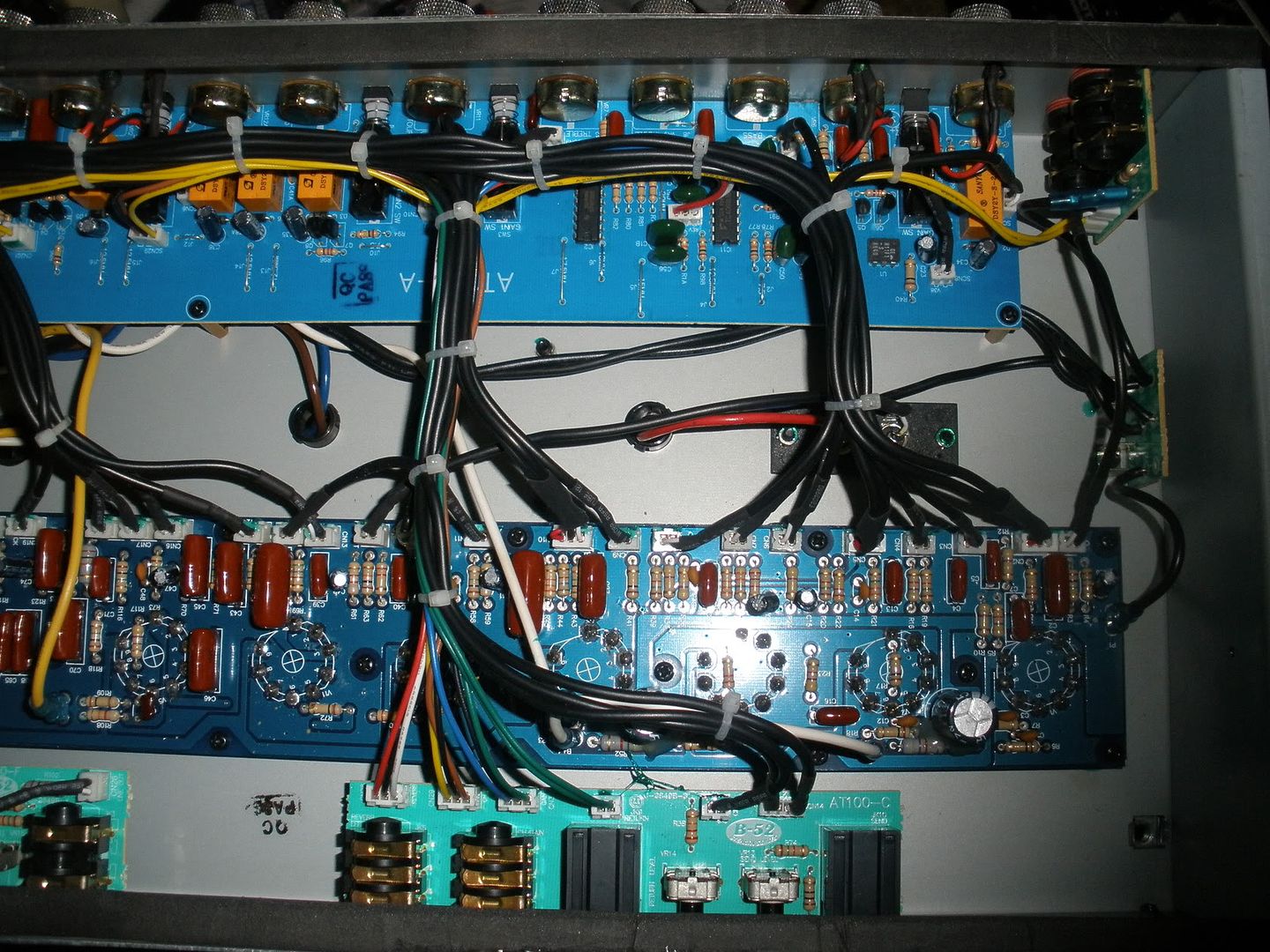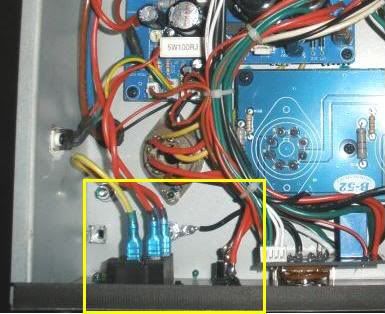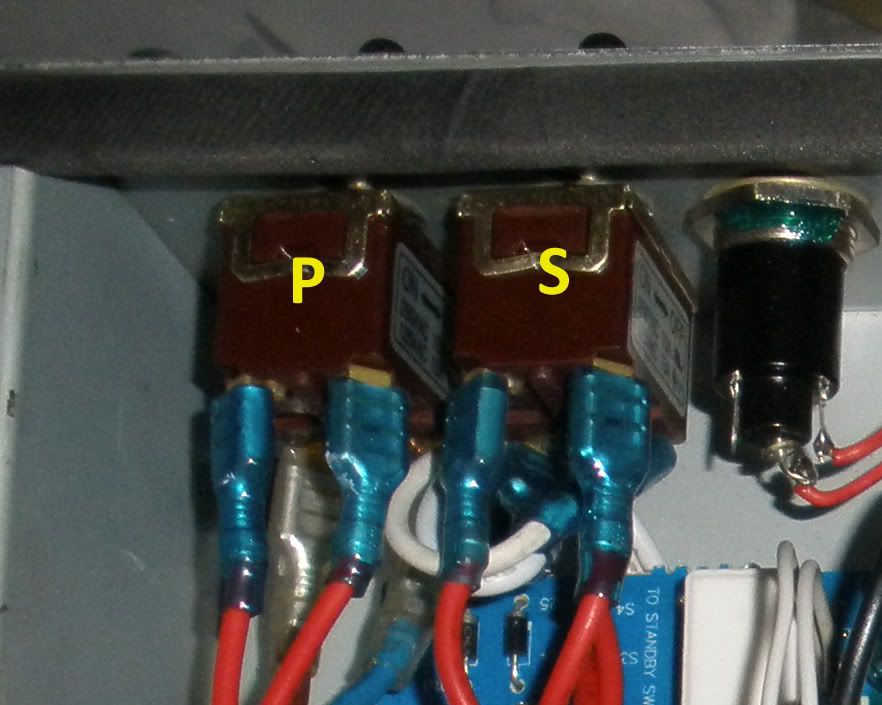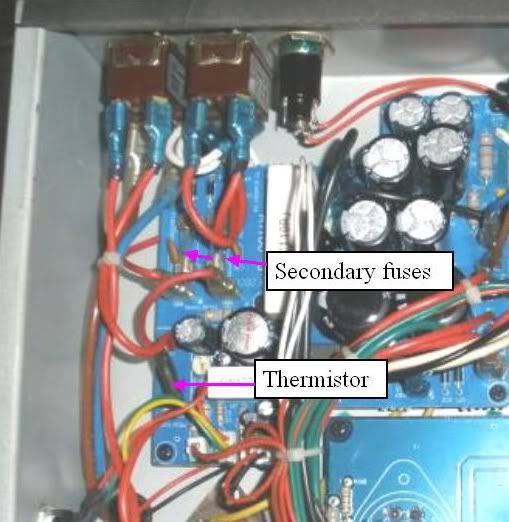Hammer
Senior Member
I posted this over on TGP, but thus far have only received an oh so helpful response advising me to not buy cheap Chinese crap. *yawn* :roll: Anyway, here's the deal:
I have a B-52 At-212 I picked up a short while ago for a bangin price and it kicked much arse...until a few weeks ago. I was playing and...it just fizzled out. The sound tapered off and the power light slowly went dim. Now it won't power on. I don't play loud (bedroom guitar hero) and there was not a power surge (everything else plugged into that outlet stayed on...not even a blink). The fuse looks good. Now, I'm handy with a soldering iron, but this is only my second tube amp and the first one to die on me like this, so I am not sure where to even begin. Any tips on where to start poking around or even if I should be poking around vs taking it to a qualified tech?
Even if you can give me just generic tube amp step by steps that could apply to any tube amp, it would be helpful.
I have a B-52 At-212 I picked up a short while ago for a bangin price and it kicked much arse...until a few weeks ago. I was playing and...it just fizzled out. The sound tapered off and the power light slowly went dim. Now it won't power on. I don't play loud (bedroom guitar hero) and there was not a power surge (everything else plugged into that outlet stayed on...not even a blink). The fuse looks good. Now, I'm handy with a soldering iron, but this is only my second tube amp and the first one to die on me like this, so I am not sure where to even begin. Any tips on where to start poking around or even if I should be poking around vs taking it to a qualified tech?
Even if you can give me just generic tube amp step by steps that could apply to any tube amp, it would be helpful.


